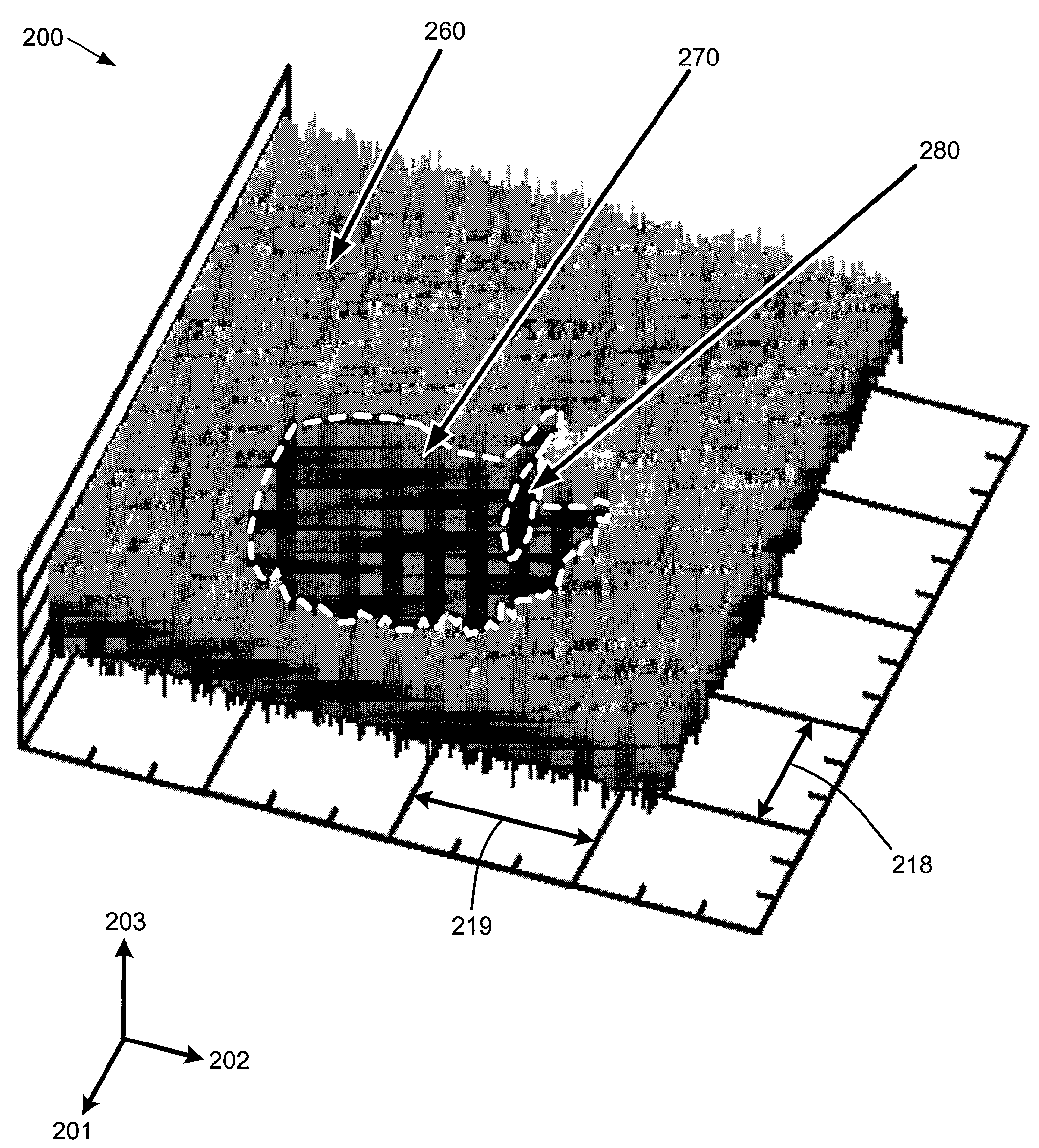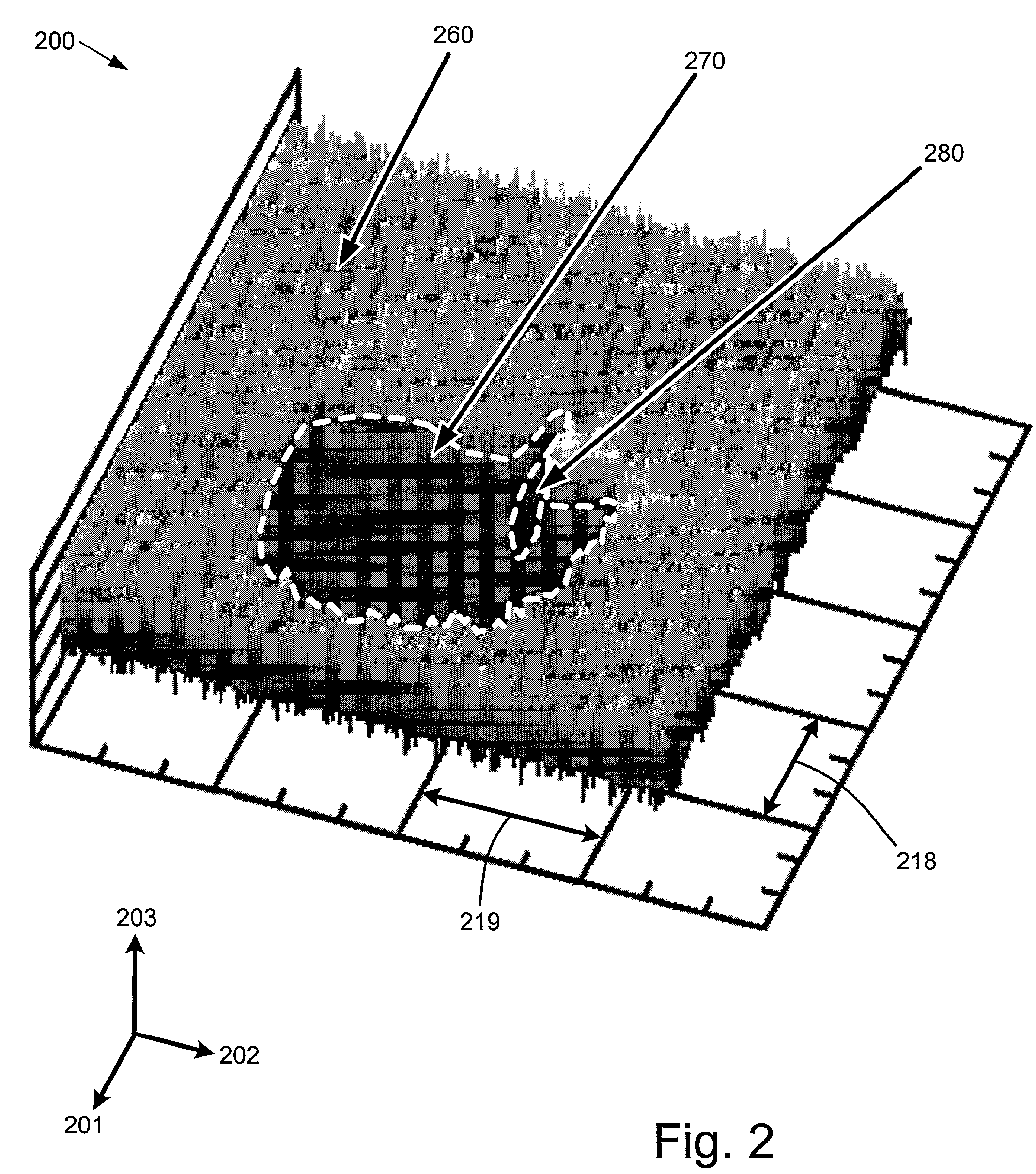In situ media defect image analysis
- Summary
- Abstract
- Description
- Claims
- Application Information
AI Technical Summary
Benefits of technology
Problems solved by technology
Method used
Image
Examples
first embodiment
[0047]Alternatively characterized, the present invention is a method (such as 500,800) or apparatus (such as 106,175) for analyzing a data storage device (such as 100) containing a transducer head (such as 134) positionable adjacent a data storage media surface. First, a defect (such as 270, 358, 658) is detected in a region of the surface. At least two readback signals are obtained (such as by steps 523,541), each received during a respective pass of the transducer head adjacent the defective region. It is also desirable to obtain additional readback signals characterizing nearby regions (such as 260,603) with greater clarity. The signals are then combined to define a category for the defective region, either automatically (e.g. by circuitry on controller board 106 or analyzer 175, configured to implement method 800) or by visual examination (see FIG. 5). Preferably, all of the read signals are received from the transducer head while the data storage device remains sealed with a to...
second embodiment
[0048]In a second embodiment, a value is assigned (such as a length value assigned in step 846 of FIG. 8) to each of the defective regions belonging to a category. The data storage device is disqualified (such as by step 1077) if an aggregation of the assigned values exceeds a predetermined threshold (such as a distance of one thousand nominal track widths). Otherwise, the data storage device is usually qualified (i.e. marked as acceptable). The threshold is preferably determined according to an outcome of conventional failure analysis (such as by method 1050), which assesses the general level of risk that the cause of the defective region will cause subsequent loss of media performance. Advantageously, this method requires such analysis for at most a minority of the data storage devices having defects in that category.
third embodiment
[0049]In a third embodiment, a taxonomy having only a small number (at most 10 to 100) of primary categories is defined, each with a respective profile (such as by method 800). That is to say that the assigning step is completed while the combination of readback signals has been compared against a small number of profiles each corresponding to a respective category, the assigned category being one of the respective primary categories. In this way, the defective region is meaningfully described in a taxonomy having at most about 100 identifiers. (Note that a “primary” category is defined to exclude categories having profiles that are so narrow that no defects match the profile in a typical population of 50 devices.)
[0050]At least one of the categories is preferably associated with a scratch, and has a profile incorporating a minimum measure of length relative to width (such as by step 844). An least one of the other categories is preferably named as “unreliable” or “corrosion-indicat...
PUM
 Login to View More
Login to View More Abstract
Description
Claims
Application Information
 Login to View More
Login to View More - R&D
- Intellectual Property
- Life Sciences
- Materials
- Tech Scout
- Unparalleled Data Quality
- Higher Quality Content
- 60% Fewer Hallucinations
Browse by: Latest US Patents, China's latest patents, Technical Efficacy Thesaurus, Application Domain, Technology Topic, Popular Technical Reports.
© 2025 PatSnap. All rights reserved.Legal|Privacy policy|Modern Slavery Act Transparency Statement|Sitemap|About US| Contact US: help@patsnap.com



